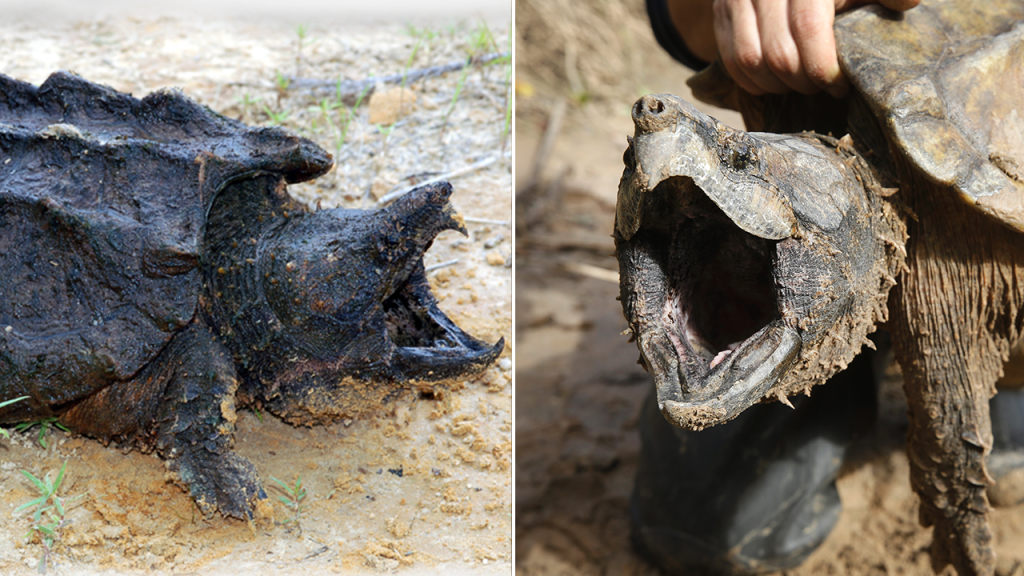The Kansas Department of Wildlife and Parks is collaborating with researchers from Missouri State University to reintroduce alligator snapping turtles into state waters. The initiative involves releasing juvenile turtles raised at the Tishomingo National Fish Hatchery in Oklahoma into the Neosho River, a tributary of the Arkansas River that spans parts of Kansas and Oklahoma. These turtles, which are between 6 and 8 years old, are the largest species of freshwater turtle, with males typically weighing between 155 and 175 pounds. The goal of the project is to track the movement, survival, and growth rates of the turtles post-release.
Alligator snapping turtles from the hatchery have previously been reintroduced in other states such as Illinois, Tennessee, Louisiana, and Oklahoma. The turtles are being released into the Neosho River in Kansas due to barriers like dams that prevent them from naturally making their way into the state. By tagging and tracking the turtles, researchers aim to learn more about their behavior and distribution patterns in the wild. The first release is scheduled for the fall of 2024, with additional releases planned for 2025.
The decline of alligator snapping turtles is attributed to habitat degradation and over-harvesting for their meat, according to the National Wildlife Federation. To combat this decline, conservation efforts like reintroduction programs are crucial in ensuring the survival of this species. By releasing juvenile turtles into suitable habitats and monitoring their progress, researchers and wildlife agencies can better understand the challenges faced by alligator snapping turtles and implement effective conservation strategies to protect them.
The reintroduction of alligator snapping turtles into Kansas waters is a significant step towards conserving this species and restoring their populations to healthy levels. By partnering with researchers from Missouri State University and utilizing data gathered from previous reintroduction efforts, the Kansas Department of Wildlife and Parks hopes to increase the chances of success for this initiative. Through tracking the tagged turtles and assessing their survival and growth rates, researchers can gain valuable insights into the impact of habitat restoration and conservation efforts on these prehistoric creatures.
The Neosho River, where the alligator snapping turtles will be released, offers a suitable environment for these turtles to thrive. As part of the Mississippi River watershed, the river provides essential resources and habitats for a variety of freshwater species, including the alligator snapping turtle. By introducing these turtles into the river and monitoring their movements, researchers can assess the effectiveness of the reintroduction program and make informed decisions for future conservation efforts.
Overall, the collaboration between the Kansas Department of Wildlife and Parks, Missouri State University researchers, and other stakeholders involved in the reintroduction of alligator snapping turtles into state waters represents a proactive approach to conserving threatened species and restoring ecosystems. By combining scientific research, conservation strategies, and public outreach initiatives, the project aims to raise awareness about the importance of protecting alligator snapping turtles and their habitats. Through continued monitoring and evaluation, conservationists can work towards securing a sustainable future for these iconic creatures and the diverse freshwater ecosystems they inhabit.


